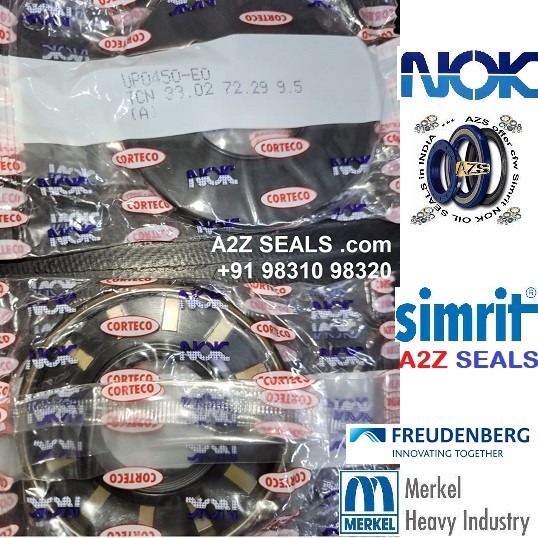NOK Sealing, a globally recognized leader in sealing solutions, sets the standard for precision and reliability. Renowned for innovation, NOK specializes in manufacturing high-quality seals that ensure optimal performance in diverse industries. Whether in automotive, industrial machinery, or aerospace applications, NOK’s cutting-edge technology and commitment to excellence make their seals synonymous with durability. With a rich history and a global reputation for quality, NOK Seals continue to be the top choice for businesses seeking superior sealing solutions that stand the test of time. Trust NOK for sealing solutions that drive efficiency and longevity in critical applications. A2Z SEALS offers wide range of seals.

General studies of Seals 1 Sealing
Design and Construction:
Also see : NOK Sealing
Basic Design Principles:
The fundamental design principles of oil seals revolve around creating a secure and efficient barrier. This includes considerations for lip geometry, spring configurations, and contact pressures to ensure optimal sealing performance.
Factors Influencing Design:
Several external factors influence oil seal design, including temperature variations, pressure levels, and operating speeds. Understanding these factors is crucial to designing seals that can withstand diverse and demanding conditions.
Types of Seals:
Oil seals come in various types, each tailored to specific applications. Lip seals are common in rotary applications, mechanical seals are used in high-performance scenarios, and other specialized variations cater to unique operational requirements.
Material Selection:
Choosing the right materials for oil seal construction is a delicate balance between flexibility, resilience, and chemical resistance. The selection process involves considering the specific demands of the application and the characteristics of the fluids involved.
Functionality and Working Principles:
Mechanism of Oil Sealing:
The mechanism behind oil sealing involves creating a physical barrier between moving and stationary components. This is typically achieved through the dynamic interaction of the seal lip with the rotating shaft, ensuring a tight and effective seal.
Interaction with Lubricants:
Oil seals work in conjunction with lubricants to maintain an optimal operating environment. Understanding the synergy between seals and lubricants is essential for enhancing performance and extending the lifespan of machinery. Also see : NOK Sealing
Factors Affecting Sealing Efficiency:
Several factors influence the efficiency of oil seals, including surface finish, shaft speed, and temperature. An in-depth understanding of these variables is crucial for designing seals that perform reliably under diverse conditions.
Performance Testing and Analysis:
Laboratory Testing Methods:
Laboratory testing is essential for assessing the performance of oil seals under controlled conditions. Various methods, including leak tests, friction tests, and endurance tests, provide valuable data for evaluating the effectiveness of seals.
Evaluation of Factors:
Factors such as wear, friction, and temperature play pivotal roles in the performance of oil seals. Rigorous evaluation and analysis of these factors contribute to the development of seals that can withstand the challenges of real-world applications.
Statistical Analysis:
Statistical analysis of performance data allows for a quantitative assessment of oil seal behavior. This approach provides insights into the variability of performance under different conditions and aids in the identification of trends and patterns.
